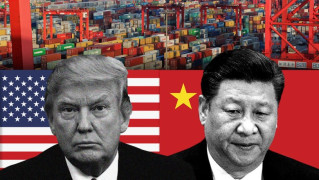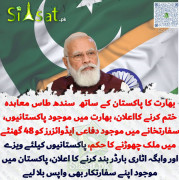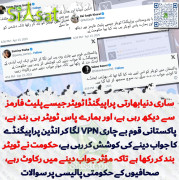What Is Coltan?
W A S H I N G T O N By Imtiyaz Delawala
You may not have heard of coltan, but you have it in your cell phone, laptops, pagers and other electronic devices. It is important to everyday communication in the United States, but it is making the conflict in Congo more complicated.
What Is Coltan?

Columbite-tantalite — coltan for short — is a dull metallic ore found in major quantities in the eastern areas of Congo. When refined, coltan becomes metallic tantalum, a heat-resistant powder that can hold a high electrical charge. These properties make it a vital element in creating capacitors, the electronic elements that control current flow inside miniature circuit boards. Tantalum capacitors are used in almost all cell phones, laptops, pagers and many other electronics. The recent technology boom caused the price of coltan to skyrocket to as much as $400 a kilogram at one point, as companies such as Nokia and Sony struggled to meet demand.
How Is Coltan Mined?
Coltan is mined through a fairly primitive process similar to how gold was mined in California during the 1800s. Dozens of men work together digging large craters in streambeds, scraping away dirt from the surface in order to get to the coltan underground. The workers then slosh water and mud around in large washtubs, allowing the coltan to settle to the bottom due to its heavy weight. A good worker can produce one kilogram of coltan a day.
Coltan mining is very well paid in Congo terms. The average Congolese worker makes $10 a month, while a coltan miner can make anywhere from $10 to $50 a week.
Financing the Conflict
A highly controversial U.N. Security Council report recently outlined the alleged exploitation of natural resources, including coltan, from Congo by other countries involved in the current war. There are reports that forces from neighboring Rwanda, Uganda and Burundi are involved in smuggling coltan from Congo, using the revenues generated from the high price of coltan to sustain their efforts in the war. By one estimate, the Rwandan army made at least $250 million over a period of 18 months through the sale of coltan, even though no coltan is mined in Rwanda. All countries involved in the war deny exploiting Congo's natural resources.
Environmental Consequences
In order to mine for coltan, rebels have overrun Congo's national parks, clearing out large chunks of the area's lush forests. In addition, the poverty and starvation caused by the war have driven some miners and rebels to hunt the parks' endangered elephants and gorillas for food. In Kahuzi Biega National Park, for example, the gorilla population has been cut nearly in half, from 258 to 130.

Tracing the Source
The path that coltan takes to get from Central Africa to the world market is a highly convoluted one, with legitimate mining operations often being confused with illegal rebel operations, and vice versa, making it difficult to trace the origin.
To be safe, in recent months many electronics companies have publicly rejected the use of coltan from anywhere in Central Africa, instead relying on their main suppliers in Australia. American-based Kemet, the world's largest maker of tantalum capacitors, has asked its suppliers to certify that their coltan ore does not come from Congo or bordering countries. But it may be a case of too little, too late. Much of the coltan illegally stolen from Congo is already in laptops, cell phones and electronics all over the world.
Coltan and Gorillas
The main area where Coltan is mined, also contains the Kahuzi Biega National Park, home of the Mountain Gorilla. In Kahuzi Biega National Park the gorilla population has been cut nearly in half, from 258 to 130 as the ground is cleared to make mining easier. Not only has this reduced the available food for the Gorillas, the poverty caused by the displacement of the local populations by the miners has lead to Gorillas being killed and their meat being sold as "bush meat" to the miners and rebel armies that control the area. Within the Dem. Rep. of Congo as a whole, the U.N. Environment Program has reported that the number of eastern lowland gorillas in eight Dem. Rep. of Congo national parks has declined by 90% over the past 5 years, and only 3,000 now remain.
The main area where Coltan is mined, also contains the Kahuzi Biega National Park, home of the Mountain Gorilla. In Kahuzi Biega National Park the gorilla population has been cut nearly in half, from 258 to 130 as the ground is cleared to make mining easier. Not only has this reduced the available food for the Gorillas, the poverty caused by the displacement of the local populations by the miners has lead to Gorillas being killed and their meat being sold as "bush meat" to the miners and rebel armies that control the area. Within the Dem. Rep. of Congo as a whole, the U.N. Environment Program has reported that the number of eastern lowland gorillas in eight Dem. Rep. of Congo national parks has declined by 90% over the past 5 years, and only 3,000 now remain.

Out of two million people working in the DRC’s artisanal mines, 40 percent of them are children. Six months ago, I met a boy I will call Lukoji in the mine washing site of Dilala near the DRC’s Kolwezi city.
When I first saw him, the seven-year- old was sifting and washing heterogenite, an ore rich in cobalt and copper minerals. He told me: “I began working in the mines when I was five”. He works along with his two brothers who are 12 and 13 years old.
Lukoji only works in the afternoon because he goes to school in the morning. Unlike him, his siblings are school dropouts and work all day in the mine from 6 a.m. to 5 p.m. Lukoji’s brothers abandoned school because their unemployed parents were unable to pay the school fees for all of Lukoji’s siblings.
Since the world’s coltan reserves is located in Eastern Congo, almost all of the coltan reserves and other deposits of raw minerals have been tapped and mined. As a result, this have caused devastating changes to Congo’s ecosystems.
Congo’s Basin rainforest is one of the world’s most threatened ecosystems — ranking seventh in the world’s top 10 countries with highest deforestation rates. In the Congo, war lords often hire illegal lumberers to conduct forestry operations, which involves clearing vegetation and cutting down trees to search for future mines. Sadly, once the mining operations begins, it is extremely difficult to restore the areas back to normal due to water contamination (workers digging in streams and lakes causes cross-water contamination between ground water and surface water), thus resulting in soil erosion as well. Once soil erosion occurs, the land is rendered useless. In many instances, after the clearing of forests, the trees are rarely sold or used by the rebels — often the wood from these trees are left to rot. Approximately 3,000 trees are cut down each day, with an annual rate of nearly 440,000 a year. Making matters worse, hundreds of animals’ habits are destroyed in the process.
According to Greenpeace Africa, a non-governmental environmental organization, the areas where coltan mining occurs is also home to nearly 270 species of animals, including the chimpanzee, the bonobo and the endangered eastern lowland gorilla. With the high rate of deforestation, these animals have no where to live, hunt, or reproduce. Consequently, many animal populations die from lack of food or either killed by poachers for their “bushmeat,” which are then sold to the rebel armies. Greenpeace Africa stated that if this continues, then Congo’s ecosystems will no longer exist within the next 10 to 12 years. Take for instance, one example of this serious threat is the eastern lowland gorilla population, which once numbered in the thousands back in 1996, is now reduced to less than 140 gorillas in 2013. Sadly, they are still being hunted by Congo’s miners, poachers, and rebels.
Three things can be done:
- Have in mind that child mining labor exists and touches your daily lives through the electronic devices that you cherish.
- Create or support efforts of social movements to address the root causes of this problem, including poverty and lack of free education in the mining zones.
- Write to your electronic manufacturers requesting them to map their supply chains and avoid using minerals emanating from child labor.
WATCH FREE DOCUMENTARY ABOUT COLTON click the link: http://topdocumentaryfilms.com/blood-coltan/
Last edited by a moderator:





































